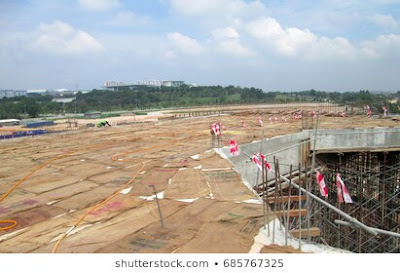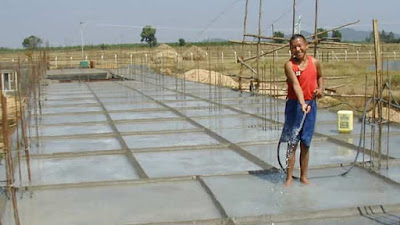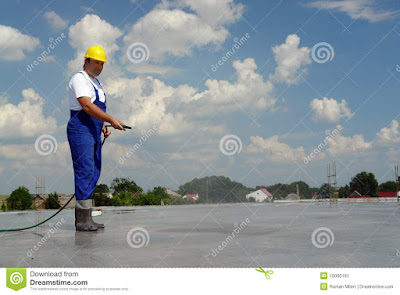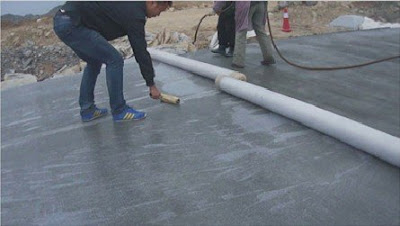In this web, we discuss the effective method of curing concrete structures. Membrane curing, ponding curing and so more.
Table of Contents
Method of curing of concrete.
In all concrete structure, curing plays an important role. The durability of concrete also depends on the curing of concrete and its different methods. The curing is maintaining the temperature of concrete during the hydration period of concrete.
Cracks of concrete also depend on proper methods of curing. therefore in this article, we discuss what is curing, the advantages of curing, disadvantages of curing, best methods of curing, the period of curing and so more.
What is Curing?
Curing is defined as the method which maintains the temperature and loss of moisture of the fresh concrete during the period of hydration of concrete or hardening period of concrete.
Due to curing the durability of concrete and hardened strength of concrete is increase. Curing is totally dependent on different methods of curing.
By the proper method use of curing also reduces shrinkage cracks of concrete.
Why curing of concrete is important? Or what does curing in concrete structure?
- Curing maintains the moisture in the concrete surface due to that hydration process of concrete properly done.
- Curing maintains the moisture losses due to evaporation and keeps required moisture on concrete surfaces.
- Shrinkage cracks are reduced by using the proper method of curing.
- Compressive strength increases by doing proper curing.
- Hardness of concrete depends on curing. The curing is also important for maximum strength of concrete.
Methods of curing
- This is a widely used method of curing, particularly for structural concrete.
- Dry Gunny bags are attached or applied on concrete surfaces like beam-columns.
- Water spray on gunny bags is applied on a concrete surface at the interval for a short period of time.
- The interval of water should be proper so the gunny bag’s surface is not dried.
- A method is most suitable for columns, beams, and slabs.
2. Ponding method
- This is the best method of curing. It is suitable for curing horizontal surfaces such as floors, roof slabs, road and airfield pavements.
- The horizontal area is thus divided into a number of rectangles.
- After 24 hours the temporary ponds are created on a horizontal concrete surface by a thin mortar wall(5cm height) on a periphery of rectangular.
- The water is filled between the ponds. The filling of water in these ponds is done twice or thrice a day, depending upon the atmospheric conditions.
- In this method water requirements are very high.
PLANTS AND EQUIPMENT USED IN CONSTRUCTION
3. Sprinkling of water
- Sprinkling of water continuously on the concrete surface provides an efficient curing.
- It is mostly used for curing floor slabs.
- The concrete should be allowed to set sufficiently before sprinkling is started.
- The spray can be obtained from a perforated plastic box. On small jobs sprinkling of water may be done by hand.
- Vertical and sloping surfaces can be kept continuously wet by sprinkling water on top surfaces and allowing it to run down between the forms and the concrete. For this method of curing the water, requirement is higher.
4. Membrane curing
- These methods prevent the loss of mixing water from the surface of the concrete.
- In this method of curing use emulsion of liquid membranes such as bitumen and asphaltic emulsion, rubber latex emulsion, resins, varnish, waxes and so more which act as a barrier by making a thin surface of the concrete so that the moisture does not dissipate.
- This method can be done to cover concrete surfaces horizontally, and vertically and also do for both surfaces.
- Sometimes concreting is carried out at remote places where there might be an acute shortage of water.
- This method of curing does not need constant supervision.
- A large amount of water required for the water curing method is not possible for economic reasons too.
GIFT CITY (Gujarat International FinanceTec-City (GIFT City)
5. Steam curing
- Steam curing method is best for precast concrete work. Because this method requires a special temperature condition which is easily maintained in the laboratory.
- In this method strength gain of concrete is accelerated, by supplying heat and additional moisture to the concrete.
- When concrete is subjected to higher temperature, it accelerates the hydration process and hence resulting in faster development of strength.
- In the steam curing method, the concrete work is placed inside the chamber or room.
- Then the operator set the suitable temperature and humidity level by the control panels.
- The heat and moisture penetrate in the materials quickly hence hydrate the concrete fully and harden them.
- Steam curing and hot water curing is sometimes adopted.
What should we do during curing? And what should we not do during curing?
- Concrete is strong enough to withstand the load of a man walking on it, immediately starting curing to prevent drying of freshly-burned concrete.
- In the summer and heavy winds, sprinkling water remotely (far away from concrete) until the curing begins.
- Use portable water for the purpose of curing.
- Not move on fresh concrete work for curing purposes.
- Curing is continuously done until the cracks are developed in concrete works.
- If curing is not done properly then the concrete decreases its strength and due to that concrete becomes weak.
What is the minimum and maximum curing period?
1. Normal weather condition
- Minimum oR at least 7 days for ordinary portland cement construction.
- Minimum or at least 10 days for blended cement( PPC, PSC) construction.
2. Hot weather condition (temperature more than 40 degree celcius)
- Minimum or at least 10 days for ordinary portland cement construction.
- Minimum or at least 14 days for blended cement( PPC, PSC) construction.
What is Impact of late curing on construction?
- 3 days delayed curing reduces 12% strength of 7 days strength and 10% of 28 days strength.
ALSO READ:
HOW TO ANALYZE STRUCTURAL BEAM
NEW INNOVATION IN CIVIL ENGINEERING
HOW BRICK ARE MADE IN COMPANY

I am a Professional Civil & Structural Engineer having more than 4 years of experience in Engineering, Procurement and Construction industry. Here i sharing the latest updates of EPC Projects and Construction News.





